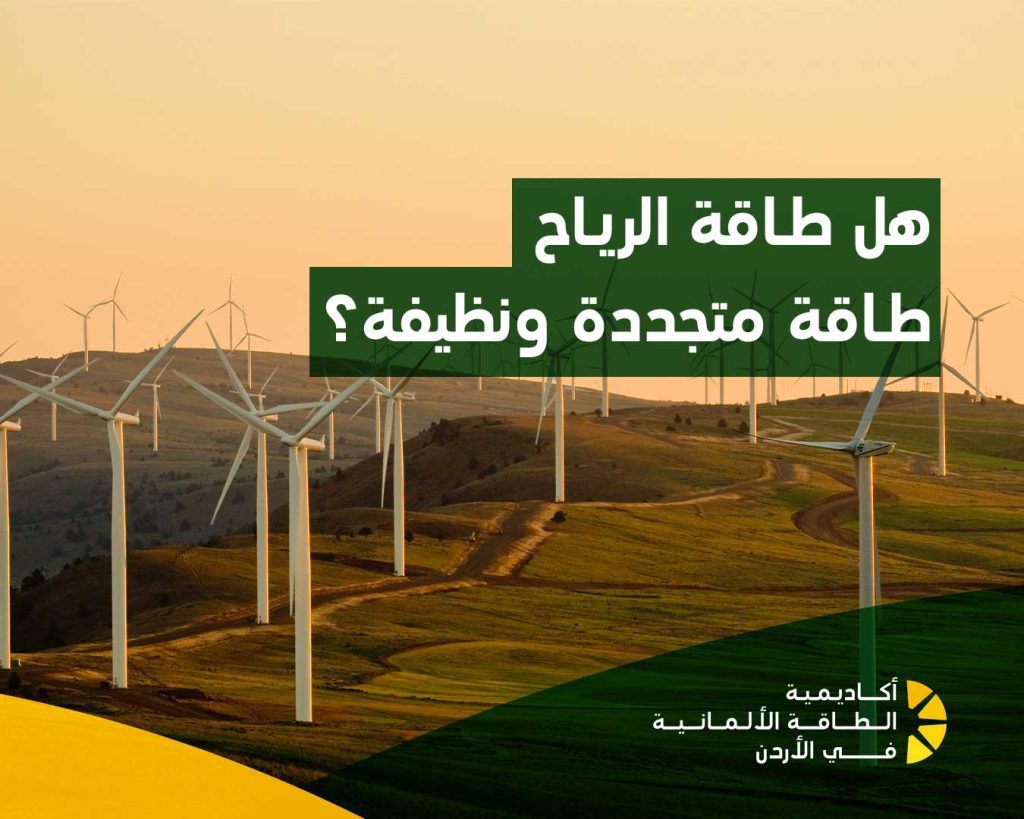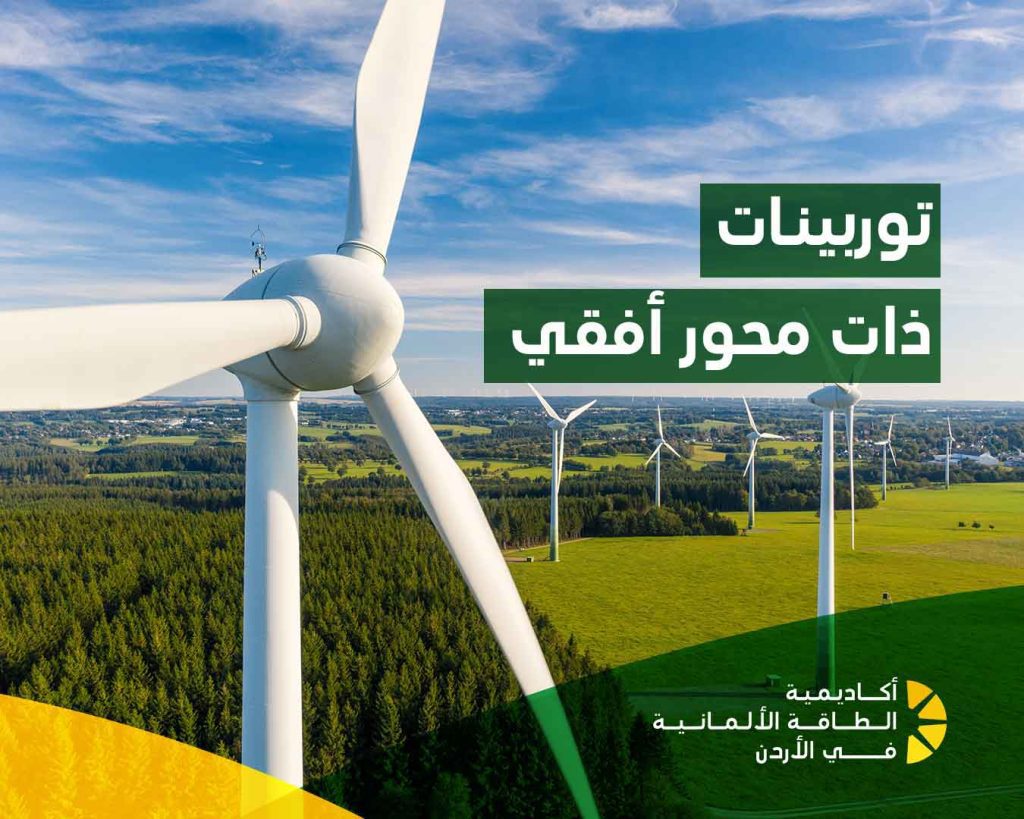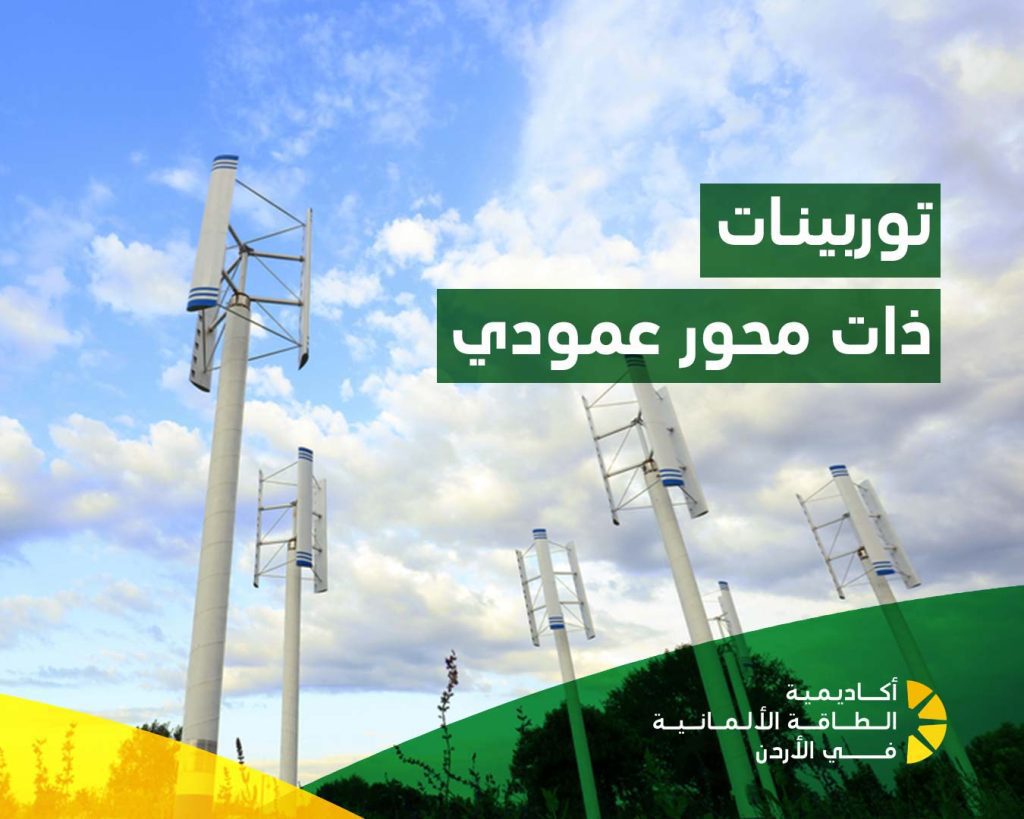Sustainable development has become a key goal at the Arab and global levels with the primary objective of achieving energy security. Although fossil fuel energy remains the primary source in the Arab nation, its higher prices resulting from higher prices and depleted sources have led some Arab States to consider renewable sources of energy, particularly wind, which is an important source of electricity production, despite some of the obstacles facing the industry of this type of energy.
Definition of wind energy
Wind energy is classified as one of the types of electro-mechanical energy, resulting from the conversion of motor wind energy into mechanical or electrical energy at special stations with varying areas.
Is wind renewable energy clean?
Unlike traditional energy sources, wind energy is abundant and sustainable; Their sustainability is closely linked to the geographical location of the place and is a clean, zero-emission energy source for any type of greenhouse gas when operating.
In other words, wind energy is green, green, environmentally friendly.

Wind Power Working Mechanism
Understanding how winds form is a useful start to understand how wind works, as winds form from the sun heating the Earth at varying degrees depending on geographical locations, which causes air to heat up the surface of these areas, and hot air rises to higher atmosphere layers, forming cold air currents to fill the gaps caused by the rise of hot air and wind.
The idea of wind energy depends on the utilization of these air currents, transforming them – relying on turbines – from their motor form to mechanical energy that is later converted into electrical energy.
(Conversion of wind energy to electric energy) Turbine working principle
wind turbine
They are devices that convert kinetic wind energy into usable renewable electric energy, transmitting it through the electrical grid. Wind turbines are divided into two basic types that make only a distinction in terms of design.
• Horizontal axis turbines

• Vertical axis turbines
The height of the turbines reaches the Earth’s surface for about 110 m, taking advantage of wind speeds that increase as the height increases, consisting of two or three fins.

Turbine Working Mechanism
The turbine blades move when the wind hits them, and as the blades begin to rotate the connected engine, converting kinetic wind energy into electric power in a quantity commensurate with wind speed and power measured by special devices in the turbine system. In order to make the most of the wind, the turbines are equipped with electric engines that move the blades, with a braking system to control the movement of blades in the event of a dramatic increase in wind and even stop them in the event of storms.
History of use of wind energy
Utilization of wind energy is not a recent issue, with the beginning of its exploitation going back to 3000 BC. em, where ancient Egyptian civilization used it to run sailboats, Babylonian civilization in windmills. By 200 B.C. The Chinese knew about wind-powered water pumps, and Europe arrived in the 12th century in horizontal-axis windmills.
The major transformation began in the late 19th century with the transformation of wind power into transmissible electricity, when James Plate of the Anderson Institute created the first canvas-bladed air mill in Scotland, and Charles Brash in Cleveland, Ohio, created the largest electric mill used until 1900.
With the beginning of World War II, interest in wind energy stopped to return in 1940, and then the boom of this industry began in 1970; As a result of increased oil prices that led to the thought of the development of wind industry technologies and systems and the emergence of the term wind farms in 1980.
Applications of electric and non-electric wind power
- The most important uses of wind energy are the following: Electricity generation and utilization in industry, with the aim of reducing the use of conventional fuels.
- Utilize them for transport by employing vessels and sailing boats.
- Water pumping with wind mill technology for irrigation and drinking.
- Industrial applications: Wind power is used in a range of applications such as telecommunications, radars, maritime operations and weather stations.
The importance of wind energy in the Arab world and Jordan
Wind as a fast-growing renewable energy source is of global and Arab importance; As a result of its cheap costs and being environmentally friendly and a natural source.
The Arab world is an ideal area for the generation of wind energy, with its unique location, climate and large areas allowing for the construction of wind stations at speeds exceeding 7 m/s, particularly on the coasts of the Atlantic, the Red Sea, the Egyptian Gulf of Suez and the Greater Sahara of Morocco and the Salalah region of the Sultanate of Oman.
Wind Energy in the Arab World
In the report of the International Wind Energy Council for 2022, Egypt, Algeria, the Sultanate of Oman and Morocco led the way in having enormous wind potential, enabling it to achieve a surge in wind electricity generation.
- Egypt
Egypt is ranked first with its great wind potential. Egyptian electricity is increasingly geared to renewable sources of energy, especially wind, although it relies mainly on conventional fuels. The best areas rich in this energy are concentrated in the high-speed Gulf of Suez.
- Sultanate of Oman
The Sultanate possesses significant techniques and capabilities, but still faces challenges in this area of high capital costs and lack of advanced techniques to measure wind speed.
- Algeria
Algeria’s heavy dependence on fossil fuels poses a challenge to widespread investment in wind energy despite its wind richness. In addition, the State’s lack of accurate maps of wind resources imposes a heavy cost on the country with its first steps towards the construction of wind power plants.
Wind Power in Jordan
According to the annual report of the World Wind Energy Council (GWEC), Jordan came third in wind power production in 2019, with a production of 190 MW. Renewable energy programmes are an appropriate option for the Kingdom; Lack of hydrocarbon resources and water scarcity with wind and solar power.
Jordan’s investment in wind energy began as a renewable source of electricity production since 2015, with the opening of the first 117 MW project in the Tafila region; It is wind rich and distinguished from the rest of Jordan in terms of wind speed and direction.
Wind Energy Projects in Jordan
With entry into Jordan in 2016, Jordan has implemented four wind stations, according to the table:

Pros and cons of wind power
No energy source is without its downsides and pros. For wind energy, its pros outweigh its downsides:
The advantages of wind energy:
- Free fuel: Wind energy provides electricity free of charge.
- Conserve the environment as it reduces greenhouse gas emissions, especially carbon dioxide, in addition to being free of any pollutants affecting both soil and water.
- Job creation: the wind industry provides new jobs related to manufacturing, installation and maintenance processes, as well as technical and advisory functions.
- Not affected by the volatility of fossil fuel prices.
- Revitalizing the rural economy.
- Low cost.
- Renewable as non-effective.
Wind energy downsides
- A variable source of energy: Although the wind is renewable but not permanent, it sometimes causes a lack of energy needs
- Biological impact: Wind energy may cause disruption to wildlife, especially birds.
- Noise pollution: Turbines produce noise that cannot be overlooked.
- Transport: Wind power is unable to supply the transport sector with the necessary power, making its reliance on petroleum products unavoidable.
- Location: Setting up turbines and wind farms requires choosing suitable locations with large areas.
The most important books in the field of wind energy
Several books on wind energy aimed at creating more knowledge of the direction of this energy:
- The Book of Wind Power Generation
Nikki Walker’s writing and the translation of Omar Sa ‘id Al-Ayobi address several key subinformative axes, the most important of which are:
- Energy in our lives.
- Energy problems.
- How do wind turbines work?
- History of wind energy.
- environmental damage.
- Defects of wind energy.
- The Book of Wind Change in Global and Arab Energy Systems – Electricity from Wind
The author of the book, Engineer Majid Karamuddin Mahmoud, Senior Technical Expert at the Regional Centre for Renewable Energy and Energy Efficiency, talks about how to benefit from wind energy; To produce electricity supported by theoretical and practical facts and information about wind energy.
- Renewable Energy Book of Rapidly Generated Wind
The book by author Abdullah Boufim highlights attempts to obfuscate the investment of wind energy in electricity generation by fossil energy acquirers. Scientists ignore the possibility of exploiting the wind generated at the speed of cars to generate electricity that charges the batteries operated, and to ensure electricity to all countries of the world by exploiting the wind generated by the speed of trains intended for the production of electricity.
In conclusion, the enormous amount of wind potential in the Arab world and the real knowledge of its current and future importance, and the serious exploitation of this endless energy source, will guarantee the region rich investments in wind energy projects, especially since most Arab countries are open to low costs of wind power units and easy access to their production equipment.
